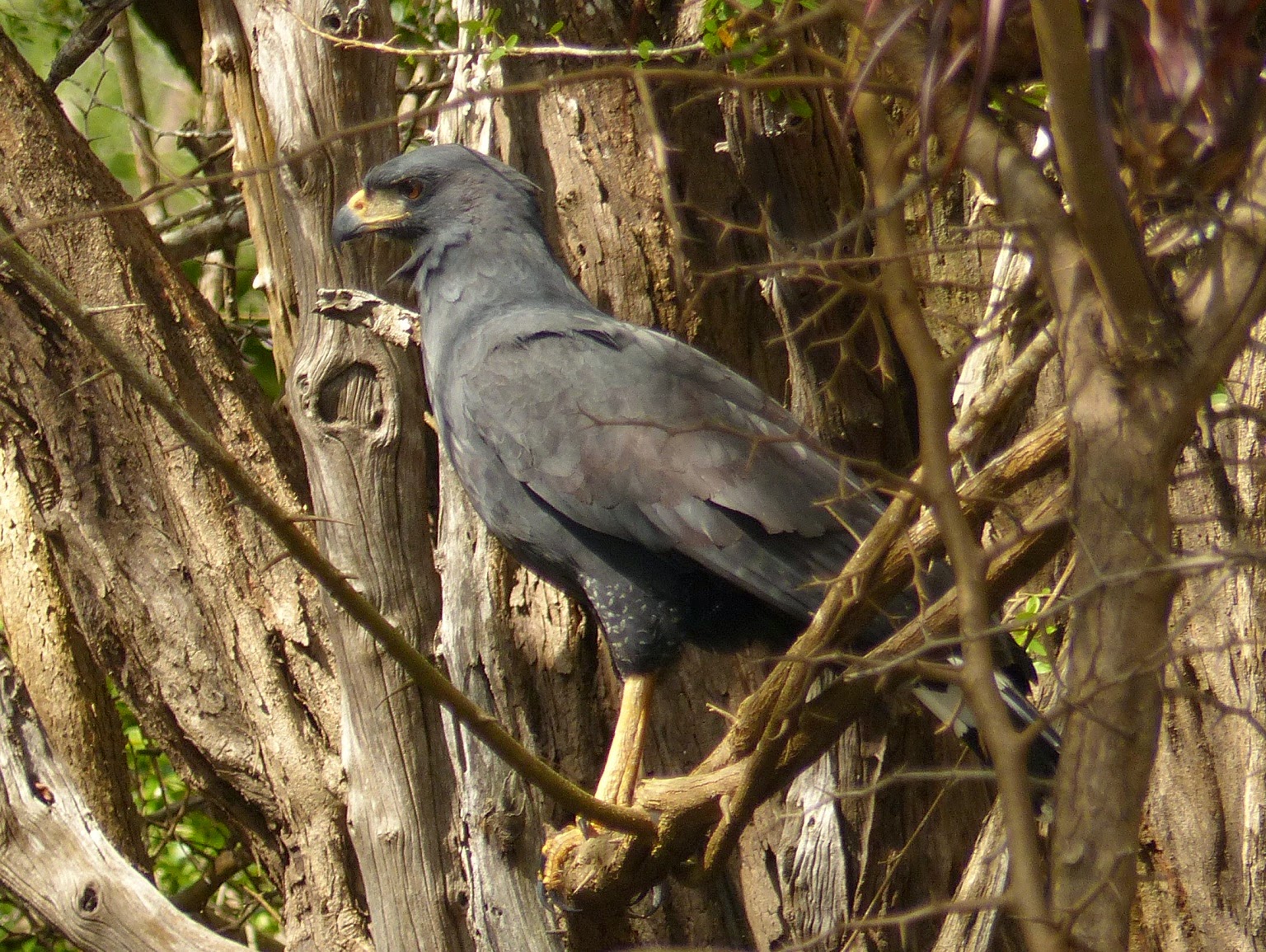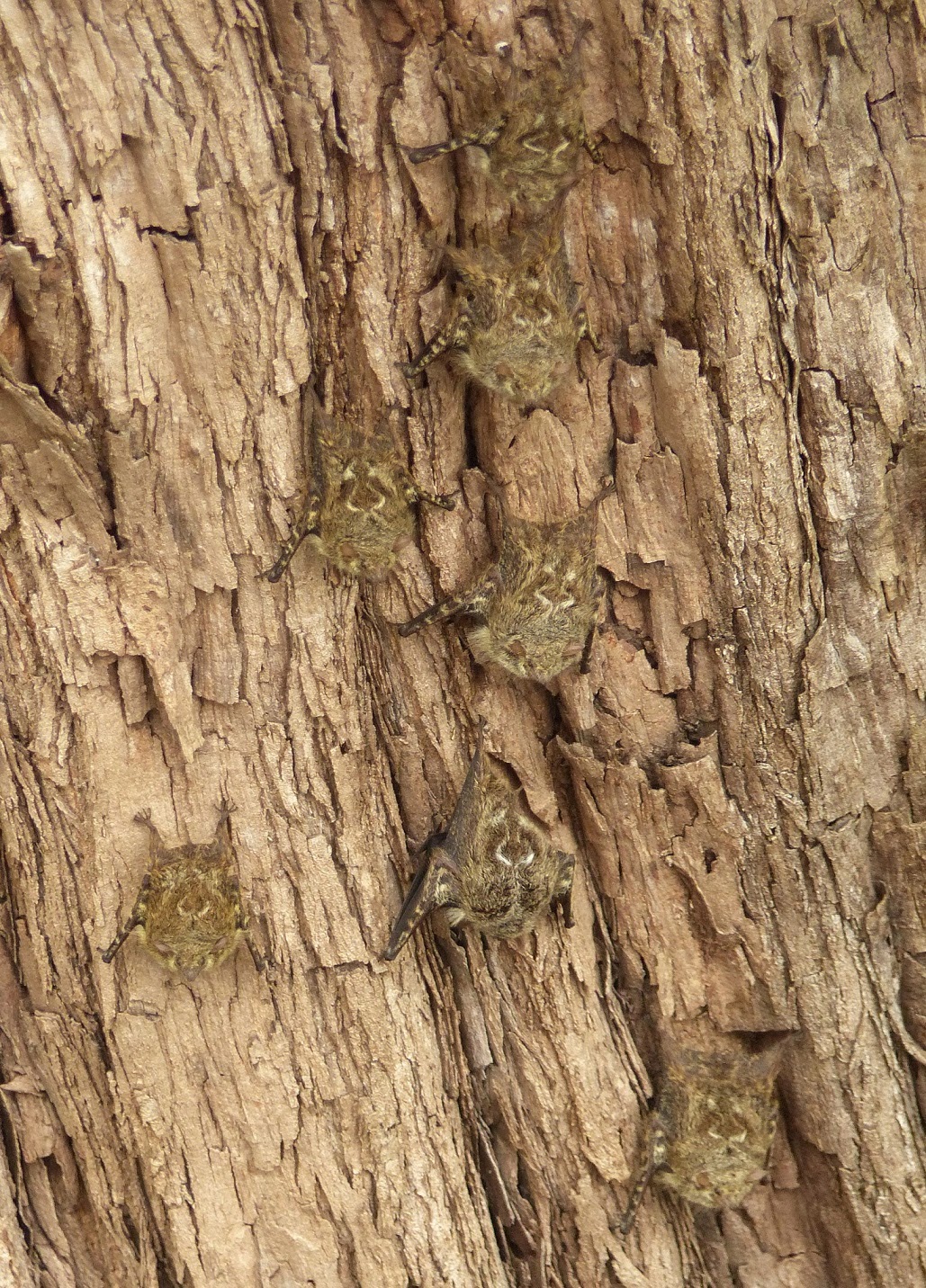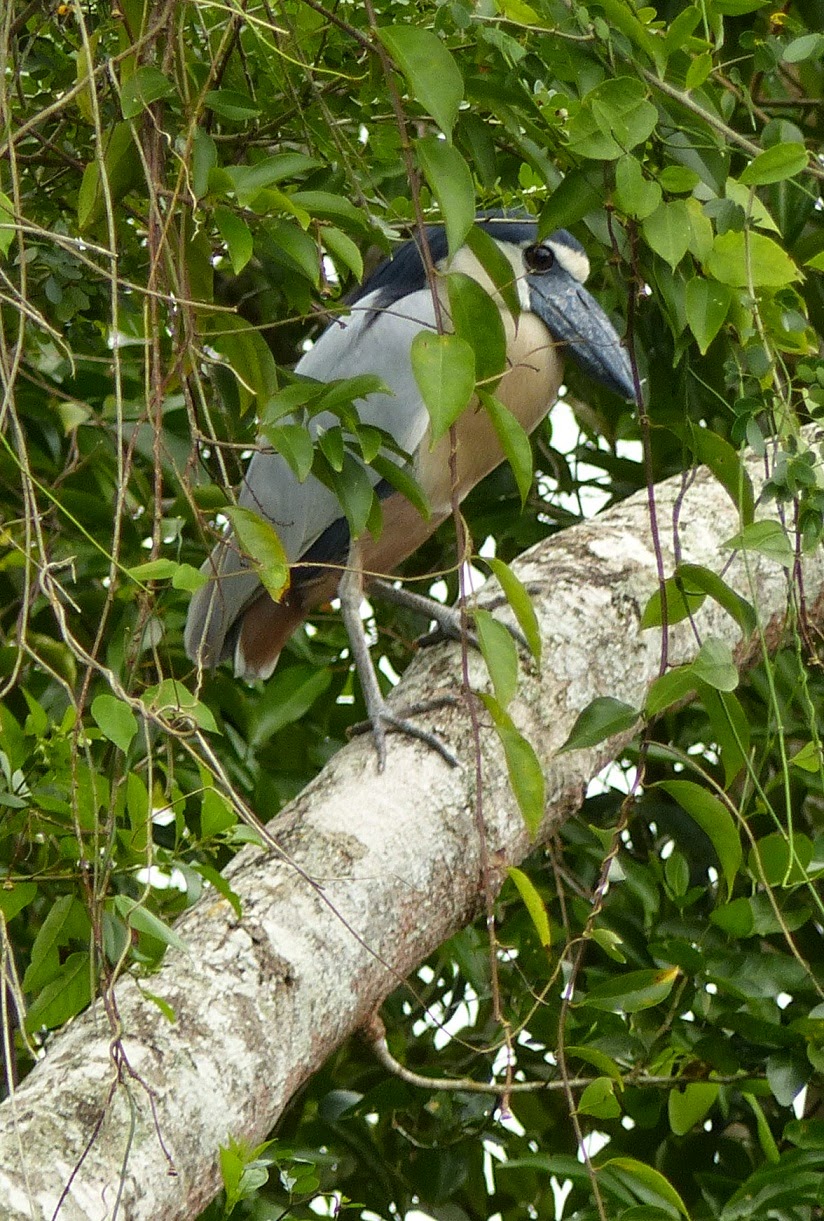 |
| Great Black Hawk Buteogallus
urubitinga |
The Crooked Tree Wildlife Sanctuary is
a low (3–15 m), flat, seasonally flooded wetland in central Belize.
In 2000 it was designated a 6,637 ha Ramsar Site and is now
co-managed by the Government of Belize and Belize Audubon Society. No
trip to Belize is complete without a boat trip on Crooked Tree
Lagoon. The birding varies markedly with water level. In my
experience, at this time of year low waters produce better birding,
with a good chance of seeing shorebirds, kingfishers and specialities
like Jabiru
Jabiru mycteria, Sungrebe
Heliornis fulica
and Agami Heron
Agamia agami. High water levels – like those
we have today – are typically less productive, but good for
migratory wildfowl, especially diving duck. Over the years, the local
boatmen-guides Lennie and Michael have become so experienced that
even with high water they always have something of interest to show,
thus ensuring that every day is a good day for a boat trip.
 |
| Roosting Proboscis Bats Rhynchonycteris naso |
But before we head out on the boat, we
like to explore the adjoining pine savannas in the cool of the
morning. Arriving at a clearing at dawn, the first sound we hear
belongs to Yucatán Jay
Cyanocorax yucatanicus, but these
birds seem to have become shy and will not grace us with an
appearance. Next we hear the harsh calls of Yucatán Parrot
Amazona
xantholora and, by manoeuvring a little, we are able to get a
wonderful scope view of a bird perched on a pine top just 50 metres
away. The rest of the parrots are all White-fronted
Amazona
albifrons – we were lucky to have the one
Yucatán. Before returning to The Bird's Eye View for breakfast, we
pick up one or two more widespread dry-country birds.
 |
| Boat-billed Heron Cochlearius cochlearius |
Before we have even boarded the boat,
Moez has picked up a couple of Wilson's Snipe Gallinago delicata
drilling into the mud in the marsh next to our lodge. With the boat
trip under way, we quickly find many of the lagoon's emblematic
species: Bare-throated Tiger-Heron Tigrisoma mexicanum, Snail
Kite Rostrhamus sociabilis, Great Black Hawk Buteogallus
urubitinga, Gull-billed Gelochelidon nilotica and Caspian
Terns Hydroprogne caspia, Purple Gallinule Porphyrio
martinicus. There are plenty of Ospreys Pandion haliaetus, all of them wintering birds of the North American breeding subspecies carolinensis, in contrast to those on Ambergris which are largely resident ridgwayi. Then, surprisingly with this level of water, an Agami
Heron trying to keep well out of sight along a weed-choked channel.
On the large area of open water beyond, we see some 80 Fulvous
Whistling Duck Dendrocygna bicolor and a dozen Ring-necked
Duck Aythya collaris, birds
only seen here occasionally. In Spanish Creek, a roost of
Boat-billed Herons Cochlearius cochlearius numbers over 20
birds. We have been on the water for almost three hours, so must get
back quickly for lunch and our long drive to Chan Chich. On the way,
a distant Sterna tern catches my attention: Forster's Tern S.
forsteri! Not common here, it is the only new bird for Belize
that I will see during the trip. Michael tells us he has never seen
one – can he be right? Since it is flying fast in the direction of the lodge, we speed after it to get a photograph. An exciting end to a really good boat trip.
 |
| Forster's Tern Sterna
forsteri |
No comments:
Post a Comment